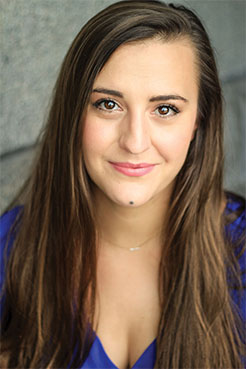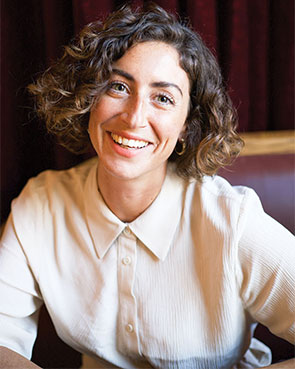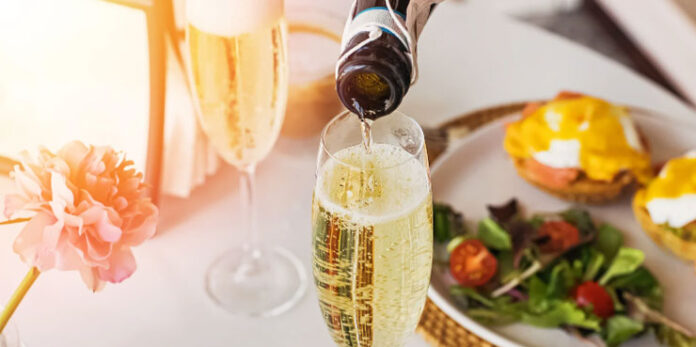The sparkling wine category, which had posted growth for 20 consecutive years since 2002, took a tumble in 2023. Sparkling wine consumption fell 3.4% to 25.7 million 9-liter cases, according to The Beverage Information Group’s 2024 Industry Overview. That’s the same percentage decline as total wine volume consumption for this past year.
Bubbly wines face the same headwinds as wine in general: People drinking less wine (and less overall), and fierce competition from the ready-to-drink cocktails, tequila and whiskey categories. Sparklers have a distinct advantage over still wines, however.
For one, Spritz cocktails, such as the Aperol Spritz and Hugo Spritz, have extended their popularity from summer sips to year-round requests. Sparkling wine-based brunch cocktails such as the Mimosa and the Bellini never go out of style. And while more consumers now opt for bubbly wines as anytime options, Champagne and other sparklers remain the standard for celebrations.

At Galpão Gaucho, Brazilian Steakhouse, with five locations in California and one each in South Carolina and Nevada, sparkling wines have steadily gained popularity in the past few years, says beverage manager Hanah Rizzardo. “This shift reflects a growing appreciation for the versatility and enjoyment of sparkling wines, dispelling the notion that they are solely reserved for celebratory occasions.”
Galpão Gaucho typically offers three by-the-glass sparkling options and an average of nine different labels by the bottle. Popular brands include Chandon Brut California Sparkling Wine (priced on average at $13 a glass and $60 a bottle); Moet & Chandon Imperial Brut Champagne ($19 a split and $109 per bottle); Veuve Clicquot Yellow Label Brut Champagne ($126 a bottle); and Dom Perignon Brut Champagne (about $395 a bottle).
For Vino Volo wine bar, which operates 42 locations inside airports across the U.S. and Canada, sparkling wine is the category leader by far, says Larissa C. Dubose, national director of beverages for parent company Paradies Lagardère. This is mainly driven by Mimosas: “Nothing quite says ‘early morning vacation flight’ like a Mimosa or Bloody Mary,” she notes.
Sparkling wine flights, which vary in number from six to eight, also do well at Vino Volo.
“We have had great feedback from our Behind the Vines flight, which highlights producers from historically marginalized groups,” says Dubose.

Spoiled for Choice
Champagne from the eponymous region in France may still be the gold standard for many, but options abound for sparkling wines from all over the world. For instance, Langlois specializes in Crémant de Loire wines from France, while Berlucchi makes Franciacorta from Italy, to name just a few. Aphrodise is a new sparkling rosé from Greece made from the xinamavro grape.
Singer Bebe Rexha in March launched Provocativo, a brut sparkling cava from Spain. Also in March, Mumm Napa announced a revamp of its domestic sparkling wine portfolio with the launch of the Mumm Sparkling line and the introduction of super-premium cuvees Mumm Sparkling Brut Prestige, Mumm Sparkling Brut Rosé and Mumm Sparkling Cuvée M.

What styles of sparkling wine are trending now? Drier expressions, such as brut nature, have grown in popularity, as well as unique grape varieties, Dubose says. “We recently featured a sparkling pais from Chile and it was really popular.” Other Vino Volo guest favorites include the 2018 Argyle Brut from Oregon’s Willamette Valley and Oddbird NA Blanc de Blancs sparkling wine from France.
Pet nat (petillant naturel) “is still having its day” at Le Crocodile in the Williamsburg, NY-based Wythe Hotel, says service and beverage director Gabriella Borg Costanzi. Champagne and cremants are the top sellers at Le Crocodile and the hotel’s Bar Blondeau. “About 12% of our wine sales are sparkling Ñ with more during the holiday season,” she says.
Daisies restaurant in Chicago currently offers “a super interesting red pet nat from Tenuta di Carleone in Tuscany called ‘Tinto’ ($67), using Alicante Bouschet grapes,” says wine director Leah Matthews. “They make wines in the Italian tradition while also employing current organic and biodynamic farming practices. This sparkling red is inky, expressing spicy baked blueberry, spring leaves and blackberry.”
The Daisies menu also has a few refreshing pet nats from Illinois Sparkling Co. available by the bottle. These include the winery’s Illnatic ($50 a bottle) and Pet Nat Rosé ($54 a bottle).
Because Daisiess focuses on sustainability and locality, “all of our current U.S. sparkling selections are from right here in the Midwest,” Matthews adds. “We particularly love Illinois Sparkling Co., and they grow their grapes just down the road in Peru, IL.”
Daisies’ by-the-glass sparkling rosé is the brand’s Champagne-method dry rosé “Ombré,” priced at $14 a glass or $50 a bottle. “For their Ombré wine, Illinois Sparkling Co. uses a hardy French-American hybrid varietal called chamborcin, which has proven to stand the test of the Midwest climate,” she says.
Guests have shown more interest in Daisies’ lambrusco selection in recent months, says Matthews. “We have a few different dry lambrusco options and styles available.”
Theses range from the light, bright La Divina Lambrusco di Sorbara Pet Nat ($42 a bottle), “with tart raspberry, salinity and violet florals to denser, richer expressions like our current lambrusco offered by the glass, the La Collina Quaresimo,” Matthews says. Priced at $13 a glass; $45 a bottle, “this lambrusco has more structure and overt savory notes like aromatics of hard-aged cheese with lush blackberries and black plumb on the palate.”

Pairing Possibilities
When it comes to pairings, Dubose, like many, believes that sparkling wine goes with everything. “The Vino Volo Butcher Board, Pizzetas, and Chopped Salad are among my favorite pairings.”

Galpão Gaucho’s Rizzardo thinks Champagne or sparkling wine “is a perfect start to our experience; it goes well with our iconic cheese bread appetizer.” She likes sparkling moscato with mild to medium spicy seasonings, “like our spicy sirloin, as well as any dessert that is low acidity.”
Sparkling rosé can pair wonderfully with any salad that features fresh berries, most cheeses and typical charcuterie offerings such as prosciutto or a dry, aged salami, Rizzardo says. “And because there is some tannin structure, it will stand up to leaner red meats like a tenderloin with minimal seasoning.”
The dry nature and acidity of the brut/Champagne style makes it a match with savory salads, a vast array of cheeses and charcuterie offerings, Rizzardo notes. “It can pair well with buttery, savory preparations of seafood, poultry, and can even pair with some traditional starchy sides – think potatoes, french fries and a lobster or truffle mac and cheese.”
Champagne with oysters remains a classic food pairing, Costanzi says. “Bubbles heighten flavor, so pairing is specific to the type of oyster.”
Le Crocodile generally serves Red Label oysters from Prince Edward Island. “Right now, we actually would recommend our Cremant de Loire by Domaine Jacky Marteau: searing acidity to meet the mignonette, refreshing salinity, and it doesn’t have a creamy or overly rich palate – both of which suit an East Coast oyster,” she notes.
N/A Options Bubble Up

Wine professionals are paying close attention to the growing no-alcohol movement. For instance, non-alcoholic beverage retailer Boisson in December began carrying a cuvée blanc sparkling magnum from Berlin-based non-alcoholic wine brand Kolonne Null.
The American Bar in The Stafford London hotel recently added Wild Idol, a nonalcoholic sparkling wine from Germany, to its menu. And Joanne Trattoria in New York offered a nonalcoholic wine flight this past winter that included two sparklers from Jøyus, along with a no-alcohol still rosé and cabernet sauvignon.
“We’ve definitely seen an increase in guests opting for non-alcoholic options,” says Costanzi. “Our two sparkling N/A wines are the highest sellers from the N/A list.”
Daisies offers a house-made non-alcoholic blush pet nat named “Pet Nah” among its nonalcoholic selections. “We have a long reputation of accommodating dietary restrictions, including those who don’t drink alcohol,” Matthews says.
Because of increased demand, all Vino Volo locations now offer non-alcoholic sparkling wine, “and we are encouraging our locations to explore with more offerings as they see the demand,” says Dubose.









